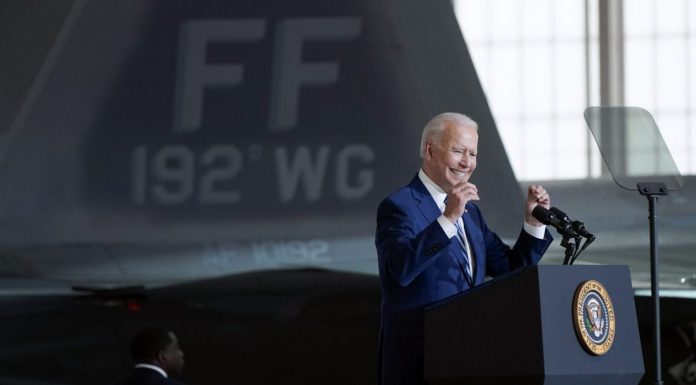(Headline USA) President Joe Biden‘s $6 trillion budget proposal promises politically freighted tax increases on the wealthy and corporations and would give domestic Cabinet departments significantly bigger budget increases than the Pentagon.
But like all presidential budget plans, Biden’s proposal needs the approval of lawmakers, who can change the allotments and dollar figures.
Here are some other things to keep in mind about Biden’s budget:
LOTS OF SPENDING
This year’s $6 trillion spending total—fueled by ongoing COVID-19 stimulus efforts—is actually down from a projection of $7.2 trillion for the budget year ending in September. But it’s sharply higher than the pre-pandemic $4.4 trillion tally of 2019 and fueled by promises of massive new government entitlements for child care, college, health care and elder care, all under the guise of infrastructure.
Meanwhile the nation’s defense budget would get minimal increases despite Biden’s plan to inject indoctrination programs such as critical-race theory into military training.
SOAKING BUSINESS AND THE RICH
Although Biden’s spending plans are apt to cause hyperinflation as the government mints more money to pay its debts, devaluing the existing currency, the economic havoc he threatens to wreak on the precariously recovering pandemic economy doesn’t end there.
Biden promises $2 trillion in corporate tax hikes, including an increase from 21% to 28% in the corporate rate and restoring the top individual tax bracket from 37% to 39.6%. Capital gains taxes would increase for wealthier investors, and inherited capital gains would no longer be tax-free.
Those tax hikes threaten to bring new investment to a standstill, and could halt further job creation despite the atrociously underwhelming numbers during the first fiscal quarter of the new administration.
Biden also plans to funnel extra tax funds to the Internal Revenue Service, giving it more public resources to crack down on unpaid taxes by boosting reporting and enforcement.
On the positive side, the plan would extend Democrats’ generous increase in the per-child tax credit from $2,000 to $3,600 for children up to 6 years old and $3,000 for older children.
But struggling parents are unlikely to see any extra pocket change as cost-of-living increases due to Biden’s bizarre energy policy have led the consumer-price index to soar on grocery bills and other essentials.
BARRELS OF RED INK
Several rounds of pandemic relief swelled last year’s deficit to $3.1 trillion, and the U.S. is on track for a $3.7 trillion deficit this year, which means a total national debt exceeding $30 trillion within a few months.
While deficits would be cut roughly in half, to $1.8 trillion, in the budget year starting in October, they would remain well above levels that mainstream economists have believed to be sustainable.
Annual interest payments on all of that Treasury borrowing would almost double in the next five years from about $300 billion now to $581 billion in 2027.
IFFY PROSPECTS IN CONGRESS
Democrats control Congress by the narrowest of margins and could theoretically pass Biden’s tax increases and many of his bold spending plans under special budget rules that prevent a GOP Senate filibuster. But it only takes a single Democratic defection to block the legislative runaround.
There’s ample resistance to Biden’s full corporate tax increase and higher taxes on capital gains. But smaller tax increases would mean Democrats would have to scale back their ambitions on spending.
And Senate Republicans are sure to bring Biden’s high-flying hopes for annual nondefense appropriations back to Earth by insisting on spending increases for the Pentagon that are comparable to domestic agencies.
CAUTIOUS ECONOMIC PROJECTIONS
With little to drive economic growth, Biden’s team appears more cautious than some of his predecessors.
The White House projects long-term economic growth of about 2% after a 5.2% boost this year and a 3.2% increase in 2022.
But even that may prove optimistic as plunging consumer confidence could create conditions similar to those that preceded the Great Recession’s 2008 bubble burst.
Although consumer prices are currently spiking, the Biden administration appears to be downplaying its long-term economic impacts, projecting only about 2% inflation each year.
Adapted from reporting by the Associated Press

